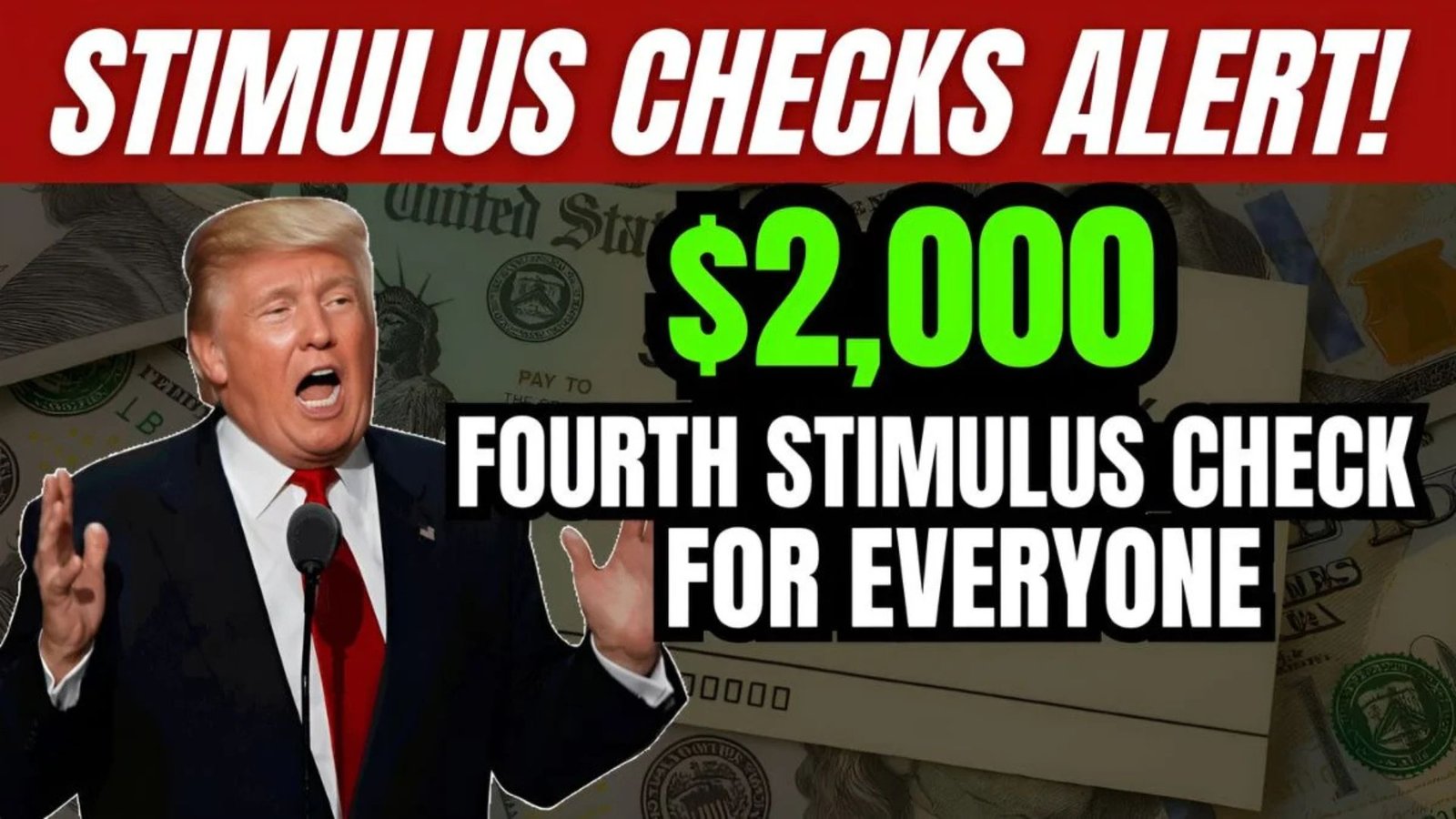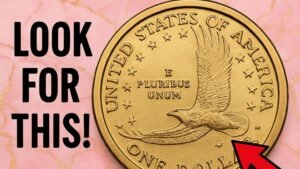Rumors about a $2,000 fourth stimulus check arriving in July or August 2025 have spread like wildfire across social media and various websites. With rising inflation and economic challenges, many Americans are hopeful for extra financial relief. But is there any truth to these claims? This article dives into the facts, clears up the confusion, and explains what’s real and what’s not about the rumored stimulus payment. We’ll also explore related financial aid options and how to avoid scams.
What Sparked the $2,000 Stimulus Check Rumors?
The buzz about a possible $2,000 fourth stimulus check began with social media posts and unverified articles claiming that new federal relief was on the way. These claims suggested that payments would arrive in July or August 2025 to help Americans struggling with high living costs. Some posts even mentioned eligibility rules similar to past stimulus checks, targeting single filers earning under $75,000 and married couples earning under $150,000.
However, these claims lack official backing. The excitement seems to stem from a mix of hope, outdated proposals, and confusion with state-level programs or tax credits. For example, a July 19, 2025, article by Rick Adams hinted that lawmakers were considering a $2,000 payment due to public pressure, but no concrete evidence supports this.
Why Are People Talking About Stimulus Checks Again?
Economic challenges like inflation, high rent, and rising costs for essentials like food and fuel have left many households struggling. Retirees, low-income families, and those on fixed incomes, such as Social Security or disability benefits, are especially hard-hit. This has fueled public demand for more government support, leading to speculation about new stimulus checks. Additionally, President Trump’s February 2025 mention of a $5,000 “DOGE dividend” tied to government savings added to the chatter, though it remains an unconfirmed proposal.
The Truth About the Fourth Stimulus Check
As of August 3, 2025, no $2,000 fourth stimulus check has been approved for July, August, or any time in 2025. Here’s what we know based on reliable sources:
- No Official Confirmation: Neither the Internal Revenue Service (IRS) nor Congress has announced or passed legislation for a new federal stimulus check. The IRS’s latest updates, like IR-2025-75 from July 15, 2025, focus on tax security and filing extensions, with no mention of new stimulus funds.
- Past Stimulus Checks: The federal government issued three rounds of stimulus checks during the COVID-19 pandemic (2020–2021):
- First round: Up to $1,200 for individuals, $2,400 for couples, plus $500 per child.
- Second round: Up to $600 for individuals, $1,200 for couples, plus $600 per child.
- Third round: Up to $1,400 per person, including dependents.
The deadline to claim the third stimulus check’s Recovery Rebate Credit was April 15, 2025, and no new federal stimulus program has been authorized since.
- Unclaimed Funds: The IRS is distributing $2.4 billion in unclaimed 2021 Recovery Rebate Credits, but these payments were completed by late January 2025. If you missed the April 15, 2025, deadline to file for this credit, those funds are now with the U.S. Treasury.
- DOGE Dividend Proposal: President Trump’s February 2025 idea of a $5,000 “DOGE dividend” from Department of Government Efficiency (DOGE) savings lacks congressional approval and a set timeline. As of July 2025, DOGE reported $199 billion in savings, far short of the $2 trillion needed for such payments.
Federal Stimulus Checks (2020–2021)
| Round | Amount (Individuals) | Amount (Couples) | Amount (Dependents) | Year Issued | Claim Deadline |
|---|---|---|---|---|---|
| First | Up to $1,200 | Up to $2,400 | $500 per child | 2020 | Expired |
| Second | Up to $600 | Up to $1,200 | $600 per child | 2020–2021 | Expired |
| Third | Up to $1,400 | Up to $1,400 | $1,400 per dependent | 2021 | April 15, 2025 |
State-Level Relief Programs: What’s Available?
While no federal stimulus check is coming, several states are offering their own relief payments, often called “inflation relief checks” or “rebate checks.” These are not tied to a federal $2,000 stimulus but can provide financial help. Here’s a breakdown:
State Relief Payments
- New York: Offers one-time payments of $200 for individuals earning up to $75,000 and $400 for married couples earning up to $150,000 to offset higher sales taxes due to inflation.
- California: The Sacramento Family First program provides $725 monthly payments to 200 low-income families until November 2025. The Middle Class Tax Refunds ($200–$1,050) have ended.
- Colorado: Issues TABOR (Taxpayer’s Bill of Rights) refunds, such as $800 for residents who filed 2023 taxes by April 15 and lived in the state all year.
- Pennsylvania and Georgia: Provide similar rebate checks with varying amounts and eligibility based on income or property ownership.
How to Qualify for State Payments
Eligibility varies by state, but common requirements include:
- Filing a recent state tax return (e.g., 2023 or 2024).
- Meeting income thresholds (often under $75,000 for individuals or $150,000 for couples).
- Residing in the state for the full year.
- For some programs, being a senior, disabled, or receiving benefits like Social Security.
Check your state’s official tax or revenue website for details on available programs and how to apply.
Other Financial Aid Options
If you’re looking for financial relief, here are some federal and state programs to explore:
- Earned Income Tax Credit (EITC): A tax credit for low- to moderate-income workers. It can provide up to $7,430 for 2024, depending on income and dependents. File your 2024 tax return to claim it.
- Child Tax Credit: Offers up to $2,000 per qualifying child under 17. Enhanced credits from 2021 have expired, but this remains a valuable option.
- Supplemental Security Income (SSI) and Social Security: Monthly payments for seniors, disabled individuals, and retirees. These are not stimulus checks but provide ongoing support.
- State Energy Credits: Many states offer rebates for utility bills, which can range from $100 to $500, depending on the program. These are separate from federal stimulus funds.
Steps to Access Financial Aid
- File Your Taxes: Even if you have low or no income, file your 2024 tax return to claim credits like the EITC or Child Tax Credit.
- Update Banking Information: Ensure your direct deposit details are current with the IRS or Social Security Administration for faster payments.
- Check State Programs: Visit your state’s revenue or tax website for local relief options.
- Avoid Scams: Only trust official sources like irs.gov or ssa.gov. Never share personal information with unsolicited callers or websites.
How to Avoid Stimulus Check Scams
The hype around a $2,000 stimulus check has led to scams targeting hopeful Americans. Here’s how to stay safe:
- Verify Sources: Only trust information from official government websites like irs.gov or treasury.gov. Social media posts and unverified blogs often spread false information.
- Protect Personal Information: The IRS never asks for Social Security numbers or bank details via unsolicited calls, texts, or emails. Report scams to the Federal Trade Commission at reportfraud.ftc.gov.
- Be Wary of “Applications”: Legitimate stimulus payments don’t require you to apply through third-party websites or pay a fee.
- Check Payment Status: Use the IRS’s “Where’s My Refund” tool to track tax refunds or Recovery Rebate Credits. You’ll need your Social Security number, filing status, and refund amount.
What About the $5,000 DOGE Dividend?
In February 2025, President Trump proposed a $5,000 “DOGE dividend” using savings from the Department of Government Efficiency (DOGE), led by Elon Musk. The idea was to return 20% of federal spending cuts to taxpayers. However, this plan faces hurdles:
- Insufficient Funds: DOGE’s reported savings of $199 billion in July 2025 are far below the $2 trillion needed for $5,000 checks.
- No Congressional Support: House Speaker Mike Johnson has expressed concerns about focusing on the national debt instead of new payments.
- Uncertain Timeline: Even if approved, payments wouldn’t likely start before late 2025 or early 2026.
This proposal remains speculative, with no legislation passed to make it a reality.
Conclusion
The $2,000 fourth stimulus check rumored for July and August 2025 is not happening. No federal legislation or IRS announcement supports these claims, and the excitement stems from social media rumors and unverified sources. While the federal government isn’t issuing new stimulus checks, some states offer inflation relief payments, and tax credits like the EITC and Child Tax Credit can provide significant help. Always verify information through official channels like irs.gov, and be cautious of scams promising quick cash. Stay informed about state programs and file your taxes to access available financial aid.
FAQs About the $2,000 Fourth Stimulus Check
Is a $2,000 stimulus check coming in July or August 2025?
No, there is no official confirmation from the IRS or Congress for a $2,000 stimulus check in 2025. Claims about payments in July or August are based on rumors and unverified sources.
Can I still claim the third stimulus check?
The deadline to claim the $1,400 third stimulus check (Recovery Rebate Credit) was April 15, 2025. If you missed it, those funds are now with the U.S. Treasury.
Are states offering any relief payments?
Yes, states like New York, California, Colorado, and Pennsylvania provide inflation relief or rebate checks, ranging from $200 to $800, depending on income and eligibility. Check your state’s tax website for details.
What is the DOGE dividend?
The DOGE dividend is a proposed $5,000 payment from federal savings, mentioned by President Trump in February 2025. It lacks congressional approval and sufficient funding, making it unlikely for 2025.
How can I avoid stimulus check scams?
Stick to official sources like irs.gov or ssa.gov. Never share personal information with unsolicited callers or websites. Report scams to reportfraud.ftc.gov.
Where can I check my tax refund or credit status?
Use the IRS “Where’s My Refund” tool on irs.gov. You’ll need your Social Security number, filing status, and refund amount. Updates are available 24 hours after e-filing or four weeks after mailing a paper return.





1 thought on “$2,000 Fourth Stimulus Check in July and August 2025: Separating Fact from Fiction”